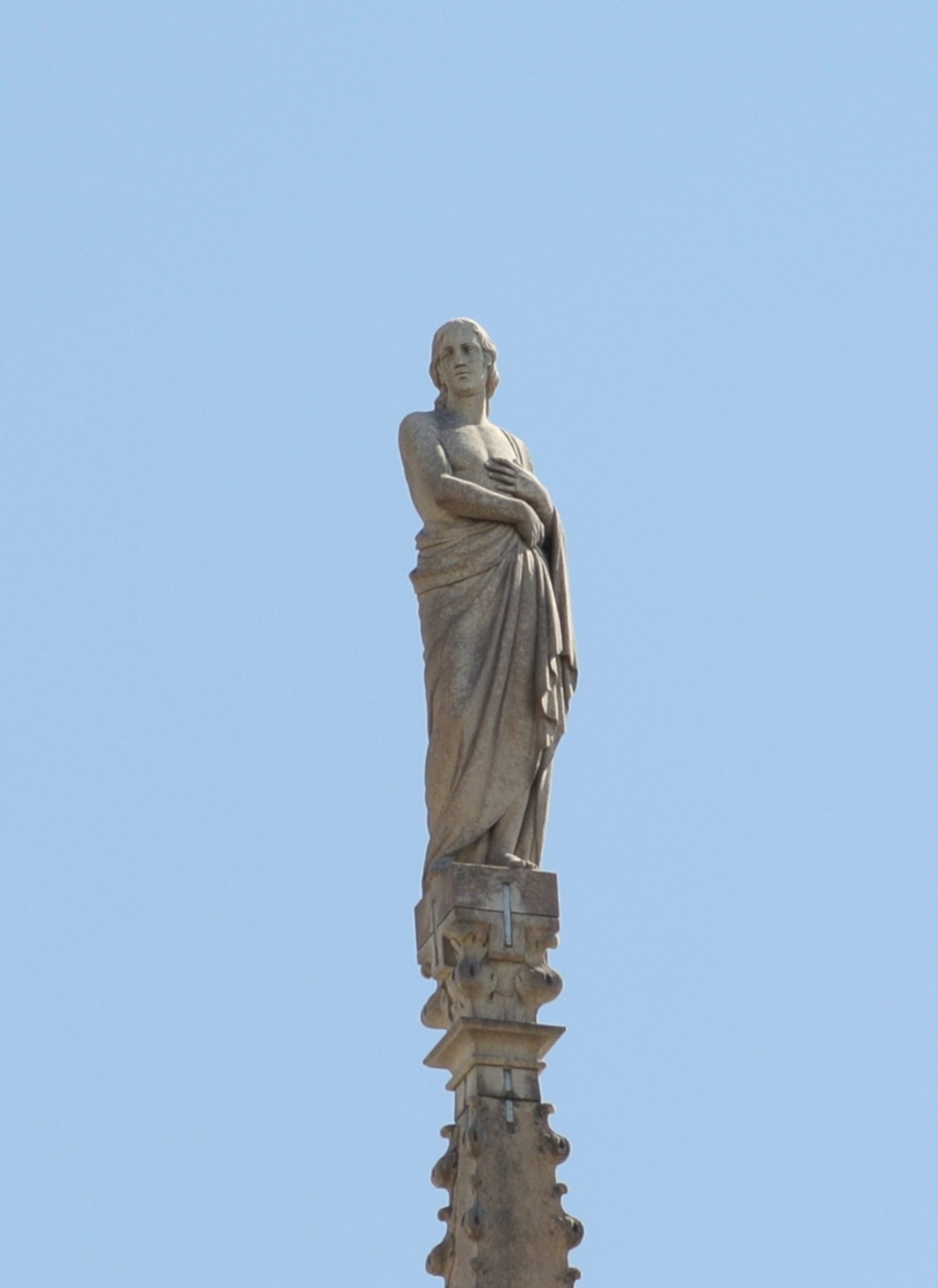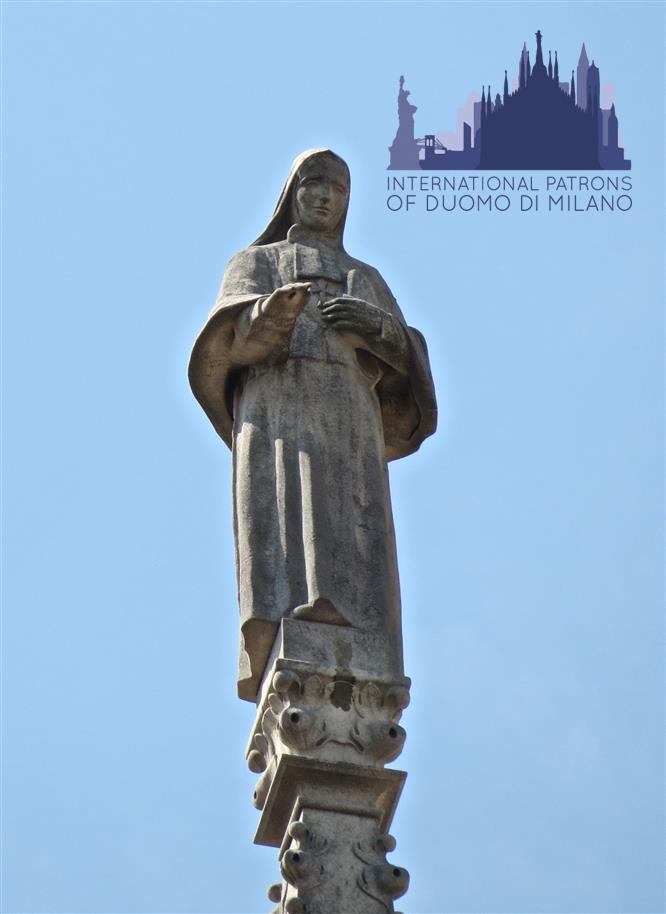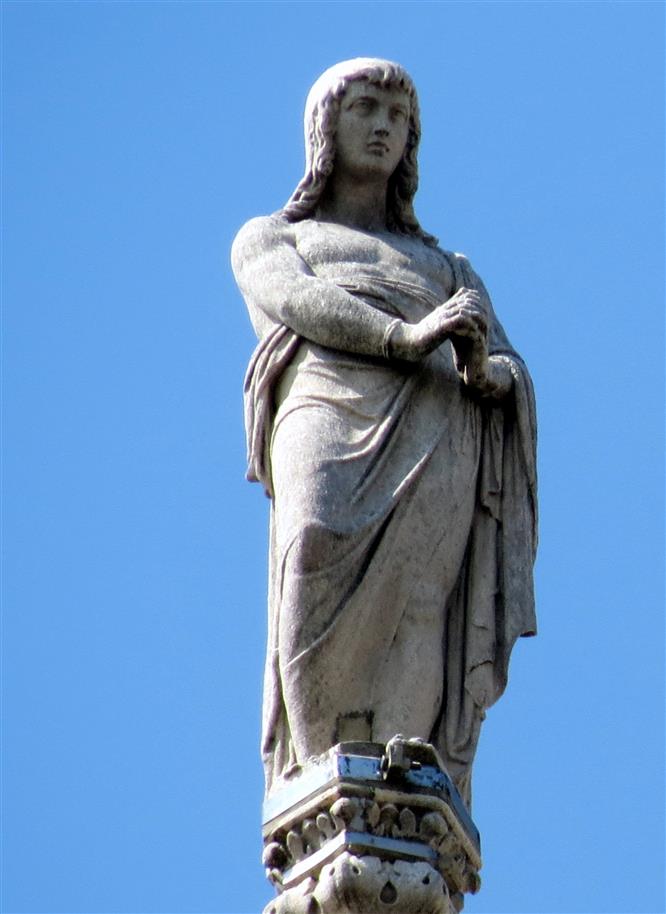Bassus is a very controversial saint: he is primarily remembered as a martyr and bishop of Nice. In addition to this, there are numerous doubts regarding his figure, but also regarding his relics and his cult, widespread in many cities on the Adriatic coast. The St. Bassus who is venerated here is thought to be the martyr Dasio of Dorostorus, also known as Bassus, whose relics were found in Ancona and from there the cult spred to the area. In 1922 San Basso was named Patron Saint of Nice and its diocese.
Tales of the statue in Dome’s building site:
The studies conducted on this work identify the subject as Saint Basso. Above all, the statue’s arms are emblematic, crossed as if an instrument of torture was pulling them backwards, exactly as reported in the story of his martyrdom. The statue, like other martyrs present on the Cathedral, is represented half-naked and covered only by a cloth in the lower part of the body. There is no other information about the author and the period of execution. Some documents from the Veneranda Fabbrica archive from 1811 report: “the two statues of St. Basso and St. Ciriano to be placed at the top of the Spiers above the Cathedral have been completed”
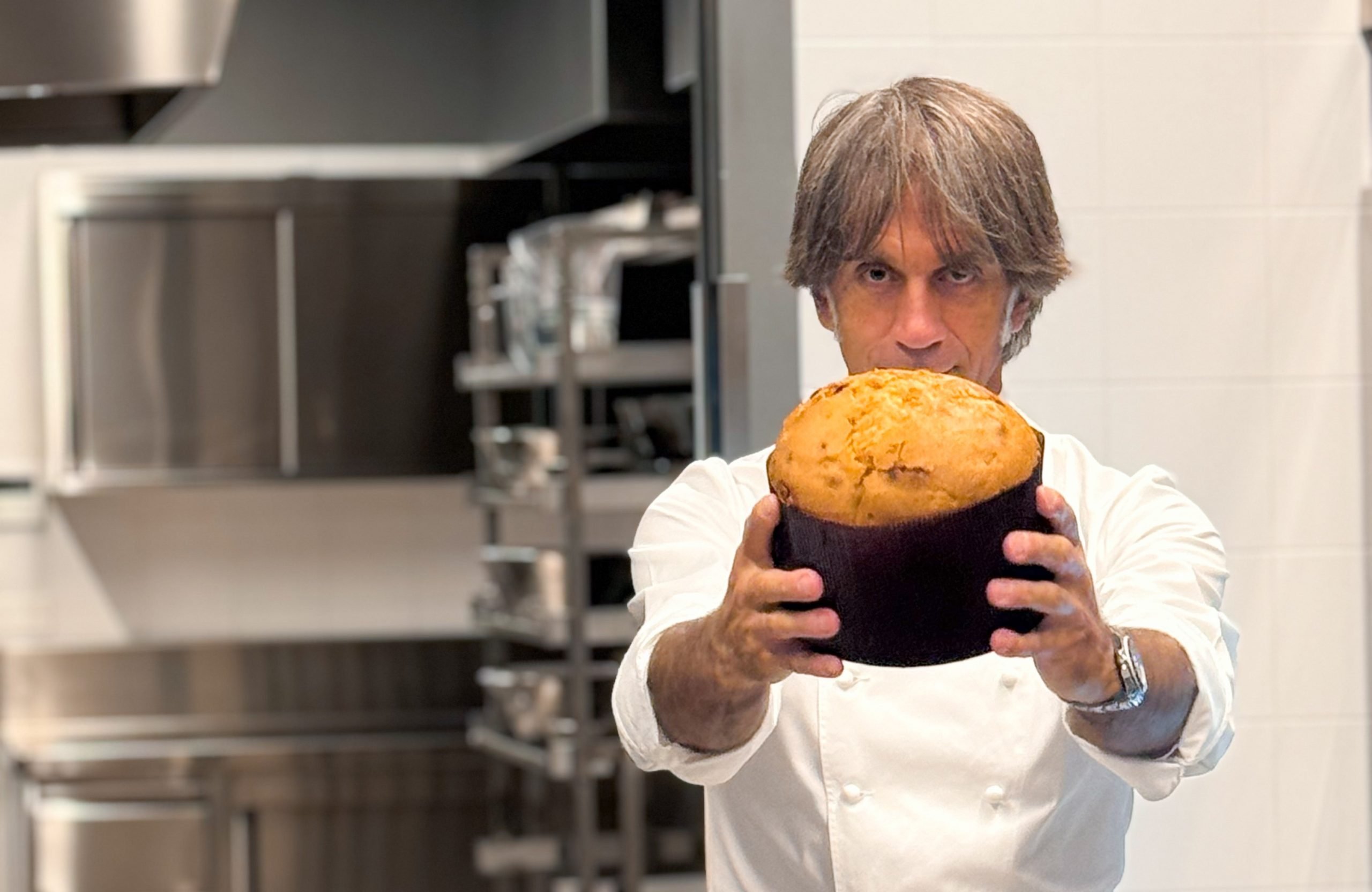
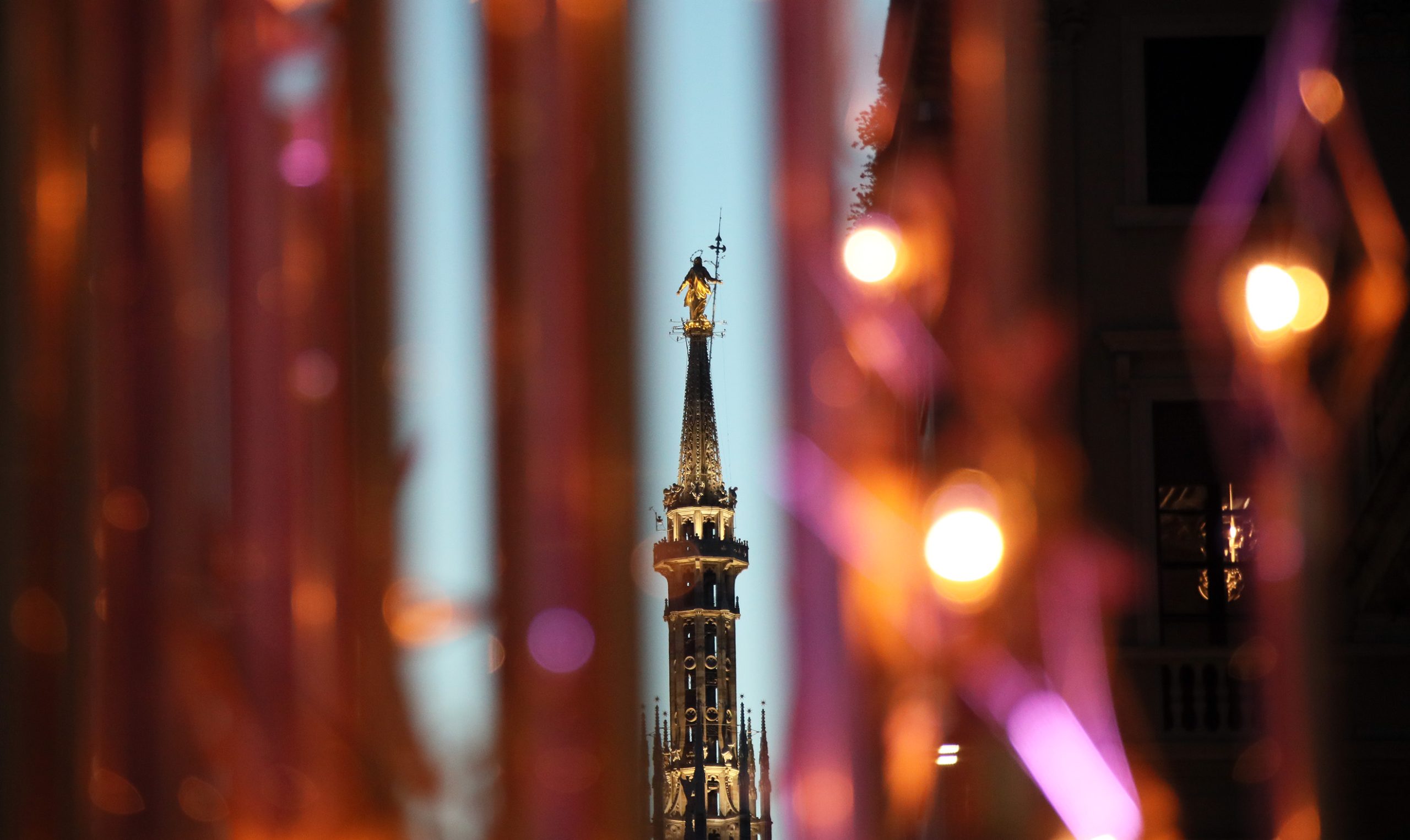
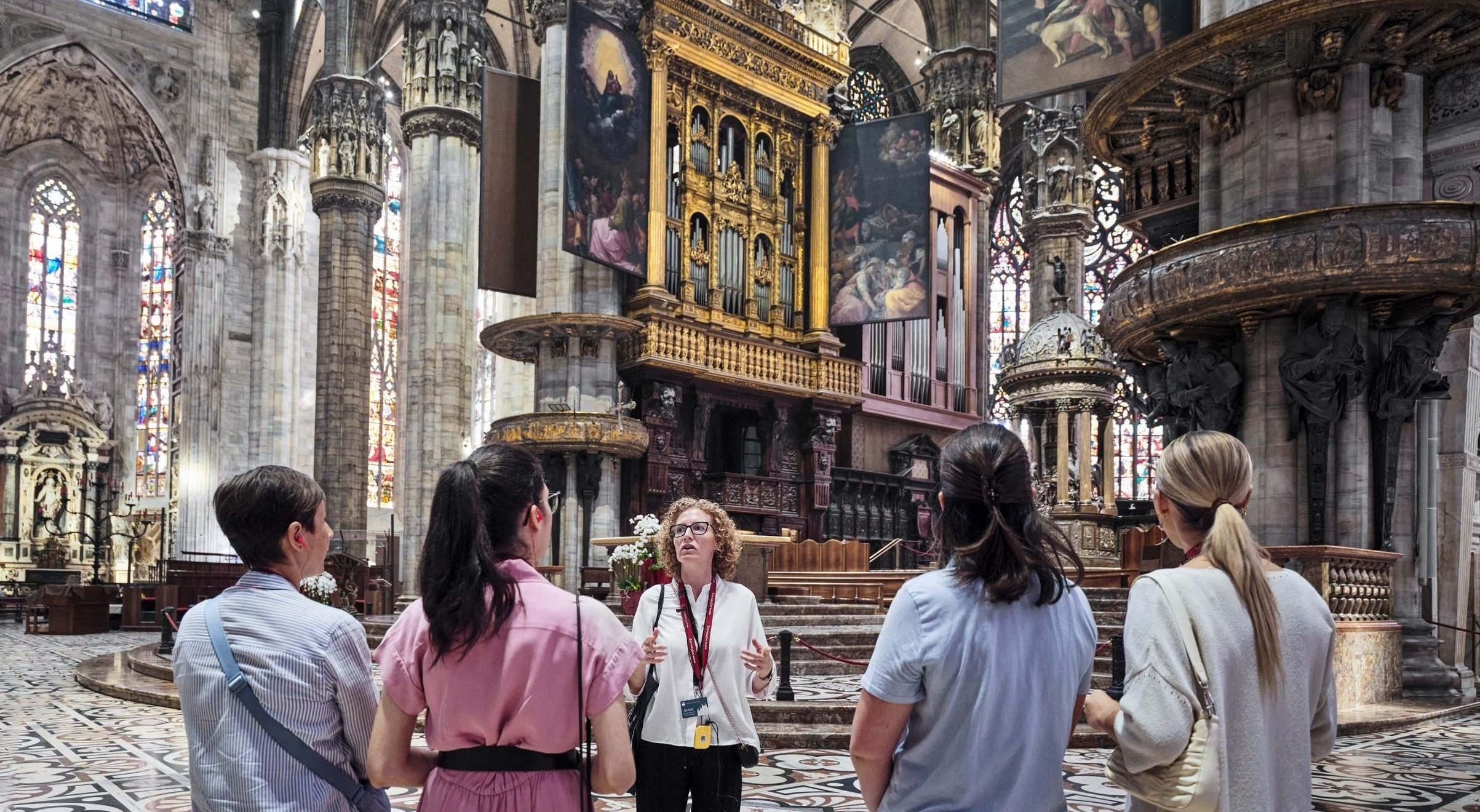
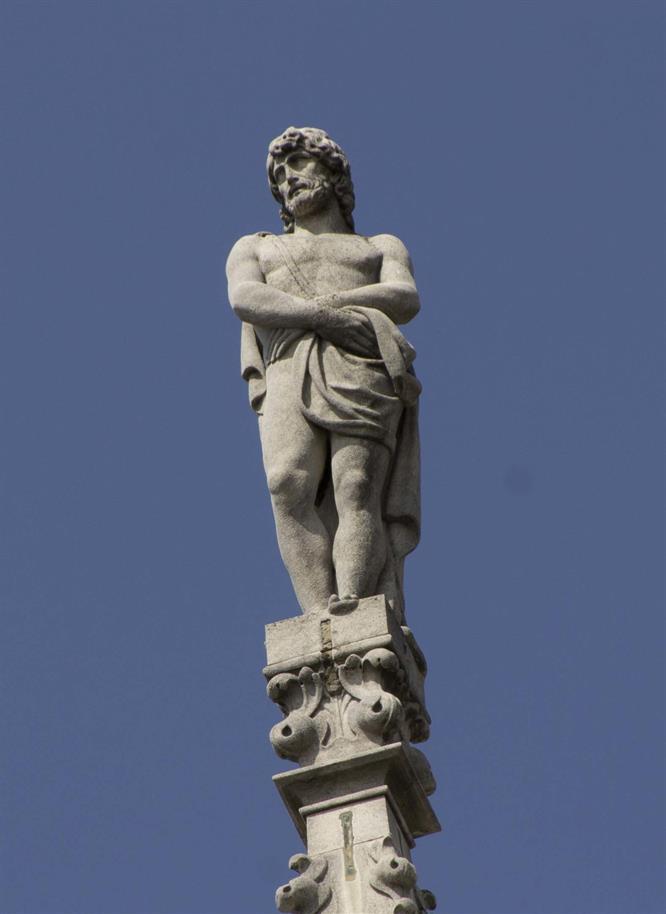
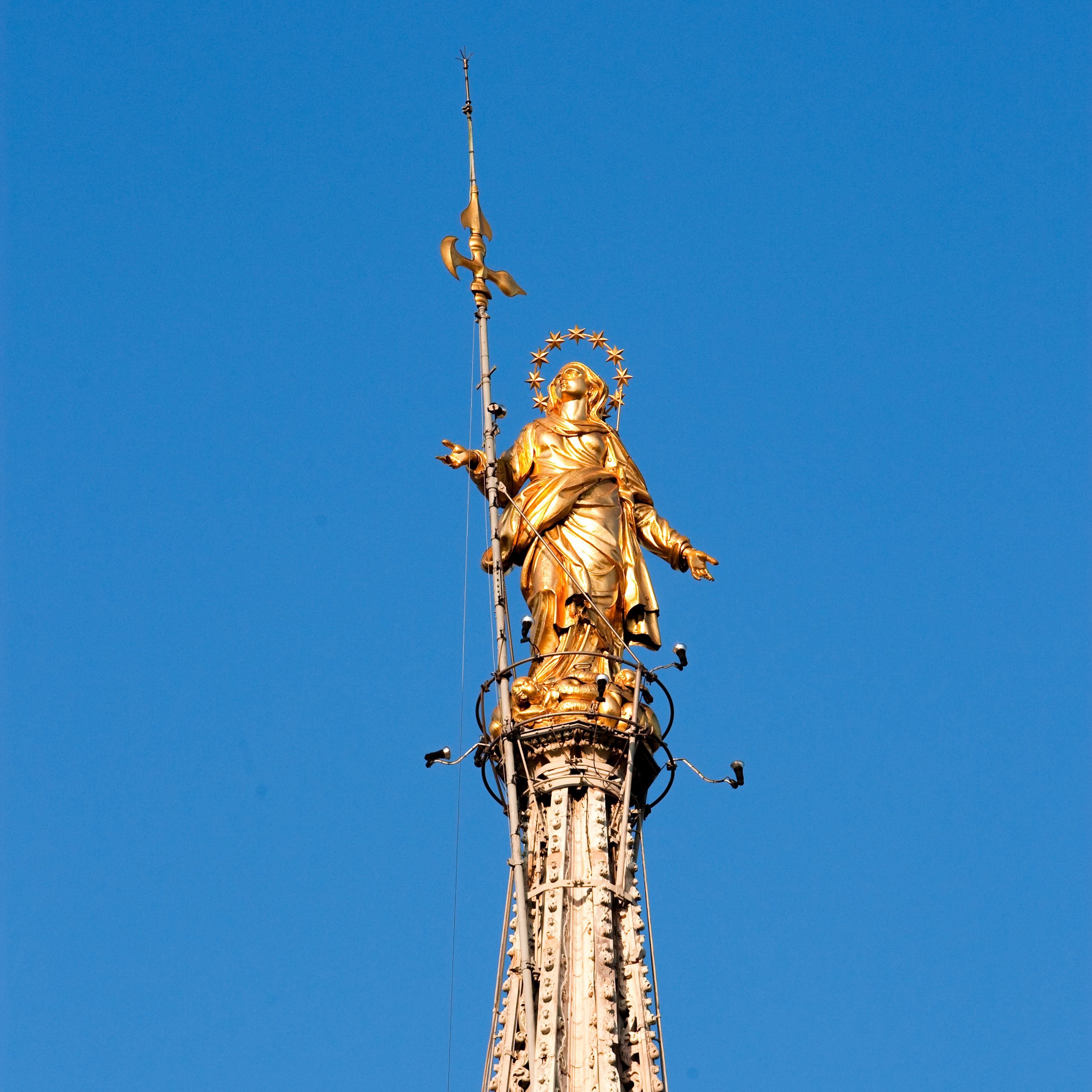
 Tiburio
Tiburio